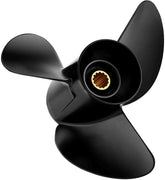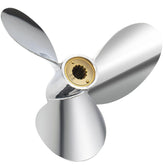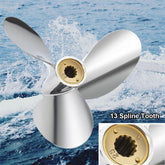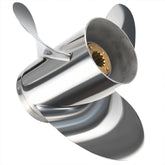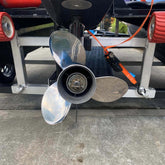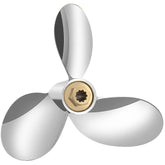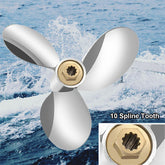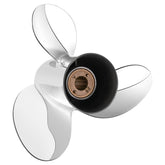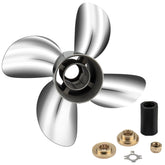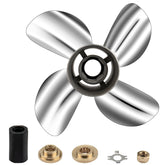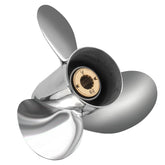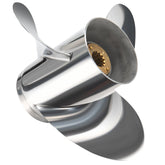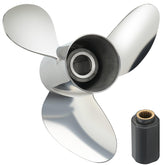Which Side of a Boat Is Port?
When you step aboard a vessel, you'll quickly encounter directional commands that might seem foreign at first. The port side of a boat is the left side of the vessel when facing the bow (the front). While this definition is simple, knowing exactly which side is port is crucial for safe navigation. Confusing port with starboard (the right side) can lead to dangerous mix-ups. Whether you're docking in a crowded harbor or steering through open water, clear terminology makes all the difference. For example, in nautical communications you'll often hear starboard and port side when referring to the right and left sides, respectively.
Which Side of a Boat Is Port?
To put it plainly, port is always the left side of the ship when looking forward toward the bow. In other words, if the captain says "turn to port," you turn the wheel so the boat's bow moves to the left. The opposite side is called starboard, which is the right side when facing forward. These fixed terms never change, even if the ship turns around. For example, a sailor facing the stern (the back) of the boat still knows the port side is on the vessel's left (from the bow's perspective).

On the port side of a boat, you'll often find a red navigation light or marker. In maritime convention, port is associated with the color red (starboard is green). Even on modern boats (for instance, those using VIFPROP propulsion systems), the crew will say "port side" and rely on the red marker to know that means the left side. This quick visual clue helps everyone stay on the same page. Memorizing that port = left (red) and starboard = right (green) is a simple trick many sailors use.
Key points about the port side of a boat:
-
Left side when facing forward: Port is the left-hand side of the vessel when you look toward the bow.
-
Red marker: The port side is marked by a red light or paint; the starboard side is marked green.
-
Opposite side: If port is the left side, then starboard is the right side.
-
Fixed reference: Unlike saying "left" or "right" (which depend on your orientation), port and starboard always mean the same sides of the boat.
Why Do Ships Use "Port" and "Starboard" Instead of "Left" and "Right"?
It might sound like extra jargon to say "port" and "starboard," but there's a clear reason for it. These terms stay fixed relative to the boat, no matter which way you face. If someone on a ship yelled "move to the left side," a crew member could get confused depending on their orientation. In contrast, "move to the port side" is unambiguous: it's always the same part of the ship. This clarity prevents costly mistakes during maneuvers or emergencies.
The history of port and starboard goes back centuries. Early sailing ships steered with a large oar on the right side. The right side became known as the "steer-board," which evolved into "starboard." The left side was originally called the "loading side" or "larboard," because that's where ships tied up to load cargo at port. Larboard sounded too similar to starboard, especially over the noise of wind and waves, so the term "port" was adopted by the mid-1800s. Today, "port" and "starboard" are the standard nautical terms for the left and right sides of a vessel.

Using "port" and "starboard" greatly reduces confusion. Navigation lights reinforce this: a red light on port and a green light on starboard confirm which is which, even at night. By learning these terms, mariners ensure that in any condition — whether a calm bay or a roaring storm — orders stay clear. For beginners, this might seem like extra work, but soon "port" and "starboard" will roll off your tongue as easily as "left" and "right" — and with much less chance of confusion on deck.
Key reasons ships use port and starboard:
-
Consistency: Port and starboard refer to fixed sides of the vessel (left and right when facing forward), regardless of who is speaking.
-
Safety: Using distinct words makes it far less likely anyone will misunderstand an order in noisy or stressful conditions.
-
International rule: Sailors around the world learn that port equals left and starboard equals right, so these terms work across languages.
-
Color coding: A red light or flag on port and green on starboard gives an extra visual cue, especially at night or in poor visibility.
In short, saying "port" instead of "left" (and "starboard" instead of "right") takes the guesswork out of boating. Next time someone asks "which side of the boat is port?", you can answer confidently: it's always the left side when facing forward, helped along by that bright red marker or light. With this knowledge, you'll be steering with confidence, no matter which way the wind blows.
How Is It Different from Starboard?
Although port and starboard might seem like opposites, there are nuances that go beyond direction. Each side often plays a different role on a boat, especially in docking, signaling, navigation lights, and equipment layout. The port side of the boat is traditionally the side closest to the dock when tying up in port. For this reason, you'll often find more wear on that side and more docking cleats or fenders positioned accordingly.
Meanwhile, the starboard side of a boat often serves as the primary side for steering and navigation control on smaller vessels. That's why you'll find the helm or console located slightly to starboard on many boats — including modern recreational vessels powered by brands like VIFPROP.
Operational Differences:
-
Docking: Boats usually dock port-side first; hence the name "port."
-
Steering Position: On many powerboats, the helm is located on the starboard side.
-
Lights and Signals: Port lights are red, starboard lights are green — this matters when identifying another vessel's direction at night.
-
Visibility Rules: When two boats are on a collision course, the boat with the other on its starboard side must give way — this rule makes knowing starboard and port critically important.
Understanding the distinction helps prevent collisions and ensures better teamwork when boating. Whether you're operating a boat solo or communicating with a full crew, misidentifying sides can lead to confusion or worse.
Easy Ways to Remember the Port Side of a Boat
Many new boaters mix up port and starboard. Fortunately, there are a few memory tricks that make it easier to remember which side is which:
-
Port and Left both have four letters.
-
Port wine is red, and the port side uses red lights.
-
Starboard and green are both longer words and associated with right.
-
The captain drinks port, not starboard! (Just a sailor's joke — but it helps!)
Some boaters even mark their sunglasses with red and green stickers, or add colored bands to their wrists, to keep things straight in the heat of the moment.
You can also use devices and displays onboard that clearly indicate which side is port or starboard — and over time, the terms become second nature.
Conclusion About Port Side of Boat
The port side of a boat isn't just a label — it's an essential concept in safe, effective navigation. From docking to turning, communication to lighting, knowing which side is port (and that it’s always the left side when facing forward) can prevent costly errors. Combined with its color code (red), consistent naming, and historical roots, port remains a universal term in the boating world.
Whether you're a first-time boater cruising along the Florida coast, or an experienced sailor working with advanced propeller systems like those from VIFPROP, understanding the port side helps ensure clear communication and safe travels.
Mastering the language of the sea doesn’t take long — and it starts with simply remembering which side of the boat is port.
FAQ About Port Side of Boat
What color is the port side of a boat?
The port side is marked with red — both in navigation lights and sometimes in physical markers or deck paint. This helps distinguish it from the green-lit starboard side.
Is port the left or right side of a boat?
Port is always the left side when you are facing the front (bow) of the boat. Starboard is the right.
Why is it called the port side?
Historically, ships docked on the left side to avoid damaging the steering oar located on the right. This docking side became known as the port side.
Can I mount a transducer on the port side of a boat?
Yes, but it depends on hull design, water flow, and your setup. Many prefer mounting on the starboard side to avoid prop wash, but the port side can work — especially with certain VIFPROP-friendly hull layouts.
Is port side more important than starboard?
Not more important, but traditionally it's the side used for docking. In collision rules, however, starboard often has the right of way, so both sides are equally critical in practice.
What's the easiest way to remember port vs. starboard?
Think: "Port and Left both have four letters," and red wine = red = port.


